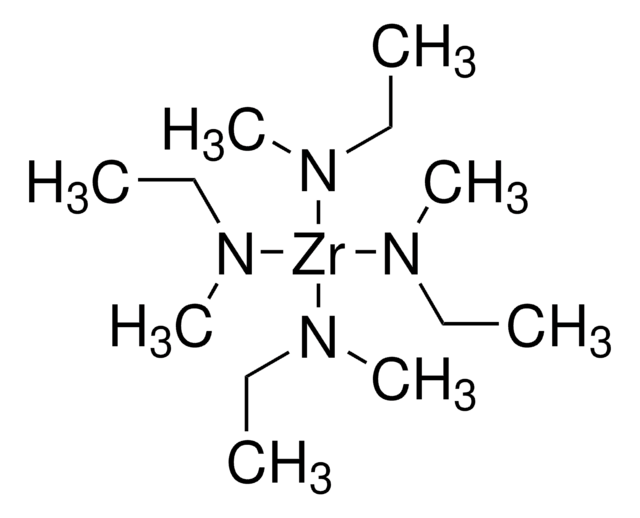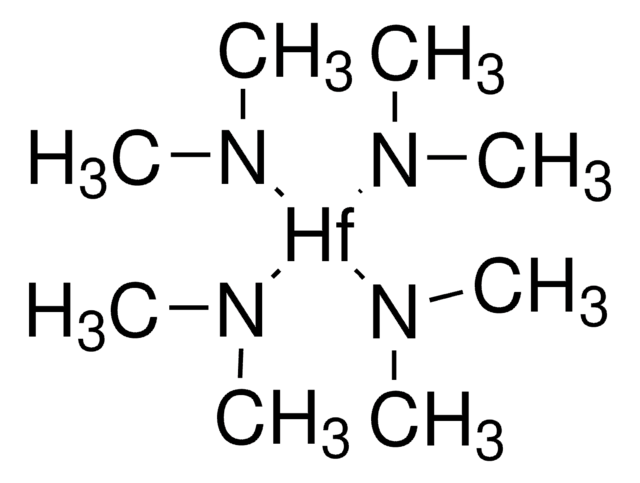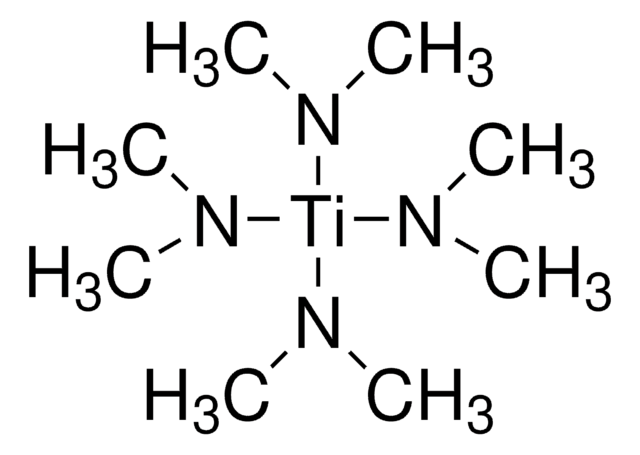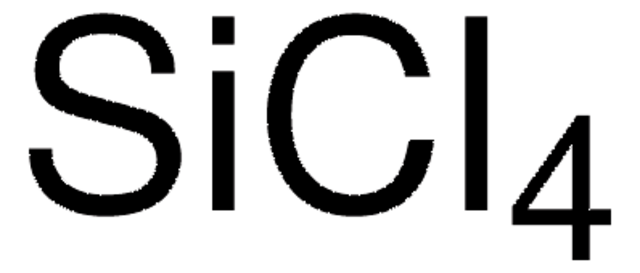Wichtige Dokumente
725544
Tetrakis(ethylmethylamid)hafnium(IV)
packaged for use in deposition systems
Synonym(e):
TEMAH, Tetrakis-(ethylmethylamino)-hafnium(IV)
About This Item
Empfohlene Produkte
Form
liquid
Eignung der Reaktion
core: hafnium
reagent type: catalyst
bp
78 °C/0.01 mmHg (lit.)
mp (Schmelzpunkt)
<-50 °C
Dichte
1.324 g/mL at 25 °C (lit.)
Lagertemp.
2-8°C
SMILES String
CCN(C)[Hf](N(C)CC)(N(C)CC)N(C)CC
InChI
1S/4C3H8N.Hf/c4*1-3-4-2;/h4*3H2,1-2H3;/q4*-1;+4
InChIKey
NPEOKFBCHNGLJD-UHFFFAOYSA-N
Suchen Sie nach ähnlichen Produkten? Aufrufen Leitfaden zum Produktvergleich
Allgemeine Beschreibung
Anwendung
TEMAH is well-suited for ALD because its adsorption is self-limiting on a number of substrates including glass, indium-tin oxide(ITO), Si(100), and two-dimensional materials like MoS2. TEMAH also conveniently reacts with either water or ozone as the oxygen-source in the ALD process.
Leistungsmerkmale und Vorteile
- Steel cylinder connected to 316 stainless steelball-valve
- 1/4 inch male Swagelok VCR connections
Signalwort
Danger
H-Sätze
Gefahreneinstufungen
Acute Tox. 4 Oral - Eye Dam. 1 - Flam. Liq. 2 - Skin Corr. 1B - STOT SE 3 - Water-react 1
Zielorgane
Respiratory system
Zusätzliche Gefahrenhinweise
Lagerklassenschlüssel
4.3 - Hazardous materials which set free flammable gases upon contact with water
WGK
WGK 3
Flammpunkt (°F)
51.8 °F - closed cup
Flammpunkt (°C)
11 °C - closed cup
Hier finden Sie alle aktuellen Versionen:
Besitzen Sie dieses Produkt bereits?
In der Dokumentenbibliothek finden Sie die Dokumentation zu den Produkten, die Sie kürzlich erworben haben.
Kunden haben sich ebenfalls angesehen
Artikel
igma-Aldrich.com presents an article regarding the savannah ALD system - an excellent tool for atomic layer deposition.
Nanocomposite Coatings with Tunable Properties Prepared by Atomic Layer Deposition
High Purity Metalorganic Precursors for CPV Device Fabrication
The properties of many devices are limited by the intrinsic properties of the materials that compose them.
Unser Team von Wissenschaftlern verfügt über Erfahrung in allen Forschungsbereichen einschließlich Life Science, Materialwissenschaften, chemischer Synthese, Chromatographie, Analytik und vielen mehr..
Setzen Sie sich mit dem technischen Dienst in Verbindung.








